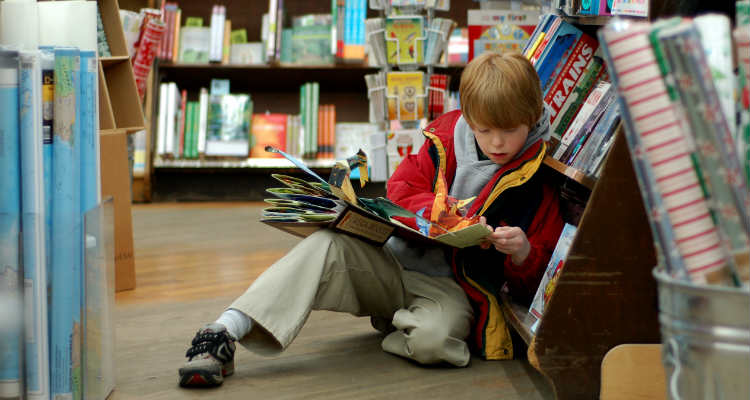Summer’s here! While classes may give way to pools and picnics, students should keep reading through the summer months. With no assigned readings, your children are free to choose what they read. Here are five ways to help your child choose books for summer reading.
- Start with what your child likes most. Does your son like dogs? Look for a book with a strong relationship between a boy and his dog, such as Sounder, Shiloh, or The Art of Racing in the Rain. Does your daughter like sports? Find books about athletes by an author such as Jake Maddox. Build on success. If your child has enjoyed early books in a series, such as Hank the Cowdog or Encyclopedia Brown, seek out the next books in the series. If your child liked a book by a prolific author such as Gail Carson Levine or Lloyd Alexander, check out another book by the same author
- Dive into nonfiction. Take advantage of your child’s interests. Artistic kids might like how-to books that teach techniques of drawing, or lively stories about artists, such as Diego or Linnea in Monet’s Garden. Do you have a stargazer? Choose books about astronomy or space travel. If your child likes history, try historical fiction, particularly a novel set in a time period your child has recently studied—for example, Across Five Aprils is a good read after studying the Civil War.
- Explore the classics. Classic works of literature present themes and characters that transcend boundaries of time. The lessons of loyalty and friendship that Wilbur learns in Charlotte’s Web are always true. The spirited Anne of Green Gables continues to win the hearts of new generations of readers, just as young Jim’s adventures with the pirate Long John Silver continue to thrill us in Treasure Island. Revisit your childhood favorites. By conveying your love for a book you read when you were very young, you can spark enthusiasm and curiosity in your children. Explain why you loved the book, and be ready to discuss ideas or actions that might puzzle a present-day reader. For example, Beverly Cleary’s Ramona books are perennial favorites, but you might need to explain what a typewriter is or why a character needs a dime to make a phone call.
- Go with a winner. Investigate the lists of award-winning titles, such as the Newbery Medal books, Caldecott Medal picture books, and Coretta Scott King Award winners for outstanding African American authors and illustrators. A visit to the Parents section of the website of the Association for Library Service to Children will reward you with many recommendations.
- Check the fit. Just as clothes need to fit to be comfortable, so do books. If you’re browsing through unfamiliar titles, ask your child to read a page or two aloud. If your child can’t easily read about 90% of the words on the page, the book might prove frustrating, so scale back a bit. Publishers such as Scholastic and Dorling Kindersley offer nonfiction books with clearly labeled reading levels, so you can choose books your child will understand. Online reviews such as those provided by commonsensemedia.org or in the Children’s section of goodreads.com , might help you decide whether a book is a good fit for your child. And of course your local librarian is always a great source of information and advice.
The key to summer reading is to read for pleasure. If you have time, read a book or two with your child, to explore and discuss together. You’ll be surprised by how much you discover.
For more summer reading ideas, consult K12‘s reading lists for expert recommendations of age-appropriate, award-winning books.





































